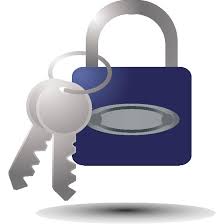In this guide, we'll explore the step-by-step process of implementing secure authentication in Laravel applications, emphasizing the importance of web security.
Introduction to Laravel Authentication
Implementing secure authentication systems in Laravel applications is crucial for safeguarding sensitive user data and preventing unauthorized access. Laravel, a popular PHP framework, offers robust features for authentication, ensuring the protection of user accounts and sensitive information.

Overview of Laravel Authentication
Laravel Authentication provides developers with built-in features for managing user authentication, including user registration, login, and password reset functionalities. By leveraging Laravel's authentication components, developers can streamline the process of implementing secure authentication systems in their applications.
Importance of Secure Authentication in Web Applications
Secure authentication is essential for protecting user accounts, preventing unauthorized access, and maintaining the integrity of web applications. Without proper authentication mechanisms in place, sensitive user data becomes vulnerable to security threats such as unauthorized access, data breaches, and identity theft.
Brief Introduction to Laravel Framework
Laravel is a powerful PHP framework known for its elegant syntax, expressive codebase, and comprehensive set of features for web development. With Laravel, developers can build robust, scalable web applications quickly and efficiently, thanks to its extensive documentation, active community support, and rich ecosystem of packages and libraries.
Significance of Web Security in Laravel Development
Web security is a critical aspect of Laravel development, as it helps protect applications from various security threats, including SQL injection, cross-site scripting (XSS) attacks, and cross-site request forgery (CSRF) exploits. By implementing secure authentication systems in Laravel applications, developers can mitigate the risks associated with these security vulnerabilities and ensure the safety of user data.
Understanding Laravel Authentication
Before diving into the implementation details, it's essential to understand the fundamental concepts of authentication in Laravel.

Basic Concepts of Authentication in Laravel
- Authentication Guards: Laravel provides authentication guards that define how users are authenticated for each request. By default, Laravel includes web and API authentication guards, each tailored to different types of applications.
- Authentication Providers: Authentication providers define how users are retrieved from the database or other storage mechanisms. Laravel's default authentication provider retrieves user information from the database using Eloquent ORM.
Authentication Workflow in Laravel Applications
- User Registration: Users can register for an account by providing their email address, username, and password.
- User Login: Registered users can log in to their accounts by providing their credentials, such as email and password.
- Password Reset: Users can reset their passwords if they forget them by requesting a password reset link via email.
Implementing Laravel Authentication
Now let's dive into the practical aspects of implementing secure authentication in Laravel applications.
Setting Up Laravel Authentication: Step-by-Step Guide
- Installing Laravel: Begin by installing Laravel using Composer, the PHP dependency manager.
- Configuring Authentication Drivers and Providers: Configure authentication drivers and providers in the
config/auth.phpconfiguration file. - Creating User Authentication Views and Routes: Generate authentication views and routes using Laravel's artisan command-line interface.
- Managing User Authentication with Laravel's Auth Facade: Utilize Laravel's Auth facade to handle user authentication, including login, registration, and password reset functionalities.
Customizing Authentication in Laravel
- Customizing Authentication Controllers and Middleware: Extend Laravel's default authentication controllers and middleware to customize authentication behavior according to your application's requirements.
- Adding Two-Factor Authentication: Enhance security by implementing two-factor authentication (2FA) for user accounts, requiring users to verify their identity using a secondary authentication method, such as SMS codes or authenticator apps.
- Implementing OAuth Authentication with Laravel Passport: Integrate OAuth authentication into your Laravel applications using Laravel Passport, a feature-rich OAuth server implementation.
Laravel Authentication Best Practices
To ensure the security and integrity of your Laravel applications, it's essential to follow best practices for authentication.
Secure Password Storage in Laravel
- Hashing Passwords: Store user passwords securely by hashing them using bcrypt, Laravel's default password hashing algorithm.
- Password Policies: Enforce strong password policies, such as minimum length requirements and character complexity rules, to enhance password security.
Role-Based Access Control (RBAC)
- Defining User Roles: Assign specific roles to users based on their permissions and responsibilities within the application.
- Restricting Access: Implement role-based access control (RBAC) to restrict access to certain features or resources based on user roles and permissions.
Protecting Routes and Resources with Middleware
- Middleware: Use Laravel middleware to protect routes and resources from unauthorized access, ensuring that only authenticated users can access sensitive areas of the application.
- CSRF Protection: Enable Laravel's built-in CSRF protection to prevent cross-site request forgery attacks, mitigating the risk of unauthorized actions performed on behalf of authenticated users.
Example: Building a Secure Authentication System in Laravel
Let's illustrate the concepts discussed above with an example of building a secure authentication system in a Laravel application.
Designing a User Registration and Login System
- User Registration: Create a registration form where users can sign up for an account by providing their email address, username, and password.
- User Login: Implement a login form where registered users can authenticate themselves by entering their credentials.
- Remember Me Functionality: Enable the "Remember Me" feature to allow users to stay logged in across sessions, enhancing user convenience.
Handling User Authentication Errors and Redirects
- Error Handling: Implement error handling mechanisms to display informative messages to users in case of authentication failures, such as incorrect credentials or account lockouts.
- Redirects: Configure redirects to guide users to the appropriate pages after successful authentication or in case of authentication errors.
Integrating Social Authentication Providers
- Social Authentication: Integrate social authentication providers such as Google, Facebook, or Twitter to allow users to log in to your Laravel application using their social media accounts.
Let's take a example
Certainly! Let's create a basic example of user registration, login, and logout functionalities in a Laravel application.
Step 1: Installation
First, make sure you have Laravel installed on your system. If not, you can install it using Composer:
composer create-project --prefer-dist laravel/laravel your-project-nameStep 2: Database Configuration
Configure your database credentials in the .env file:
DB_CONNECTION=mysql
DB_HOST=127.0.0.1
DB_PORT=3306
DB_DATABASE=your_database_name
DB_USERNAME=your_database_username
DB_PASSWORD=your_database_passwordStep 3: Create User Model and Migration
Generate a User model and migration file using Artisan:
php artisan make:model User -mThis command will create a User model in the app directory and a corresponding migration file in the database/migrations directory.
Step 4: Define User Schema
In the generated migration file (create_users_table.php), define the schema for the users table:
public function up()
{
Schema::create('users', function (Blueprint $table) {
$table->id();
$table->string('name');
$table->string('email')->unique();
$table->timestamp('email_verified_at')->nullable();
$table->string('password');
$table->rememberToken();
$table->timestamps();
});
}Run the migration to create the users table:
php artisan migrateStep 5: User Registration
Create a registration form (register.blade.php) in the resources/views/auth directory:
<form method="POST" action="{{ route('register') }}">
@csrf
<label for="name">Name</label>
<input type="text" name="name" required>
<label for="email">Email</label>
<input type="email" name="email" required>
<label for="password">Password</label>
<input type="password" name="password" required>
<label for="password_confirmation">Confirm Password</label>
<input type="password" name="password_confirmation" required>
<button type="submit">Register</button>
</form>Step 6: User Controller
Create a UserController to handle user registration, login, and logout:
php artisan make:controller UserControllerIn UserController.php, define the methods for registration, login, and logout:
use App\Models\User;
use Illuminate\Support\Facades\Auth;
use Illuminate\Http\Request;
public function register(Request $request)
{
$validatedData = $request->validate([
'name' => 'required|string|max:255',
'email' => 'required|string|email|max:255|unique:users',
'password' => 'required|string|min:8|confirmed',
]);
$user = User::create([
'name' => $validatedData['name'],
'email' => $validatedData['email'],
'password' => bcrypt($validatedData['password']),
]);
Auth::login($user);
return redirect('/dashboard');
}
public function login(Request $request)
{
$credentials = $request->validate([
'email' => 'required|string|email',
'password' => 'required|string',
]);
if (Auth::attempt($credentials)) {
$request->session()->regenerate();
return redirect()->intended('/dashboard');
}
return back()->withErrors([
'email' => 'The provided credentials do not match our records.',
]);
}
public function logout(Request $request)
{
Auth::logout();
$request->session()->invalidate();
$request->session()->regenerateToken();
return redirect('/');
}Step 7: Define Routes
Define routes for user registration, login, and logout in routes/web.php:
use App\Http\Controllers\UserController;
Route::post('/register', [UserController::class, 'register'])->name('register');
Route::post('/login', [UserController::class, 'login'])->name('login');
Route::post('/logout', [UserController::class, 'logout'])->name('logout');Step 8: Create Dashboard
Create a dashboard view (dashboard.blade.php) to display after user login:
@if (Auth::check())
<h1>Welcome, {{ Auth::user()->name }}</h1>
<form action="{{ route('logout') }}" method="post">
@csrf
<button type="submit">Logout</button>
</form>
@else
<p>You are not logged in.</p>
@endifStep 9: Protect Routes
Protect dashboard route by middleware to ensure only authenticated users can access it. Add the following line in routes/web.php:
Route::get('/dashboard', function () {
return view('dashboard');
})->middleware(['auth'])->name('dashboard');Step 10: Test Your Application
Now you can test your Laravel application by navigating to the registration page, registering a user, logging in, and accessing the dashboard.
That's it! You've successfully implemented user registration, login, and logout functionalities in a Laravel application. Feel free to further customize and enhance the authentication system based on your project requirements.
Pros and Cons of Laravel Authentication
Let's weigh the pros and cons of using Laravel for authentication in web applications.
Pros of Using Laravel for Authentication
- Rapid Development: Laravel's expressive syntax and rich feature set accelerate the development of authentication systems.
- Built-in Support: Laravel provides built-in support for authentication features, reducing the need for third-party packages or custom implementations.
- Seamless Integration: Laravel's authentication components seamlessly integrate with other Laravel features and packages, enhancing development efficiency.
Cons of Laravel Authentication
- Learning Curve: Beginners may face a learning curve when getting started with Laravel authentication due to its extensive feature set and configuration options.
- Performance Overhead: Implementing middleware and authentication checks in Laravel applications may introduce performance overhead, especially in high-traffic scenarios.
Frequently Asked Questions (FAQs)
Here are some common questions about Laravel authentication, along with their answers. You can also check question with answers of our Laravel interview preparation.
How secure is Laravel Authentication?
Laravel Authentication employs industry-standard security practices, such as password hashing and CSRF protection, to safeguard user accounts and sensitive information.
Can Laravel Authentication be extended for custom requirements?
Yes, Laravel Authentication can be extended and customized to meet specific application requirements, thanks to Laravel's flexible architecture and extensive documentation.
Does Laravel support multi-factor authentication?
Yes, Laravel supports multi-factor authentication (MFA) through third-party packages or custom implementations, enhancing the security of user accounts.
Is Laravel Passport necessary for implementing OAuth authentication?
While Laravel Passport provides a convenient way to implement OAuth authentication in Laravel applications, it's not mandatory. Developers can choose alternative OAuth implementations based on their project requirements.
How does Laravel protect against common web security threats?
Laravel employs various security measures, such as CSRF protection, input validation, and password hashing, to mitigate common web security threats like SQL injection and cross-site scripting (XSS) attacks.
Can Laravel handle large-scale user authentication efficiently?
Yes, Laravel is capable of handling large-scale user authentication efficiently, thanks to its optimized performance and scalability features.
Are there any known vulnerabilities in Laravel Authentication?
While Laravel Authentication is generally considered secure, developers should stay updated with security advisories and best practices to mitigate potential vulnerabilities.
How can I integrate third-party authentication providers with Laravel?
Laravel provides packages and libraries for integrating third-party authentication providers such as Google, Facebook, and Twitter. Developers can leverage these packages to streamline the integration process.
What are the recommended practices for session management in Laravel?
It's recommended to use Laravel's built-in session management features, such as session encryption and secure cookie settings, to ensure the security and integrity of user sessions.
Does Laravel provide built-in support for email verification?
Yes, Laravel offers built-in support for email verification, allowing developers to verify user email addresses during the registration process to prevent spam accounts and enhance security.
Conclusion
Implementing secure authentication in Laravel applications is essential for safeguarding user accounts and sensitive information from security threats.
By following the step-by-step guide and best practices outlined in this article, developers can build robust authentication systems that ensure the integrity and security of their Laravel applications. Have any questions or insights to share? Feel free to leave a comment below!


Write a comment